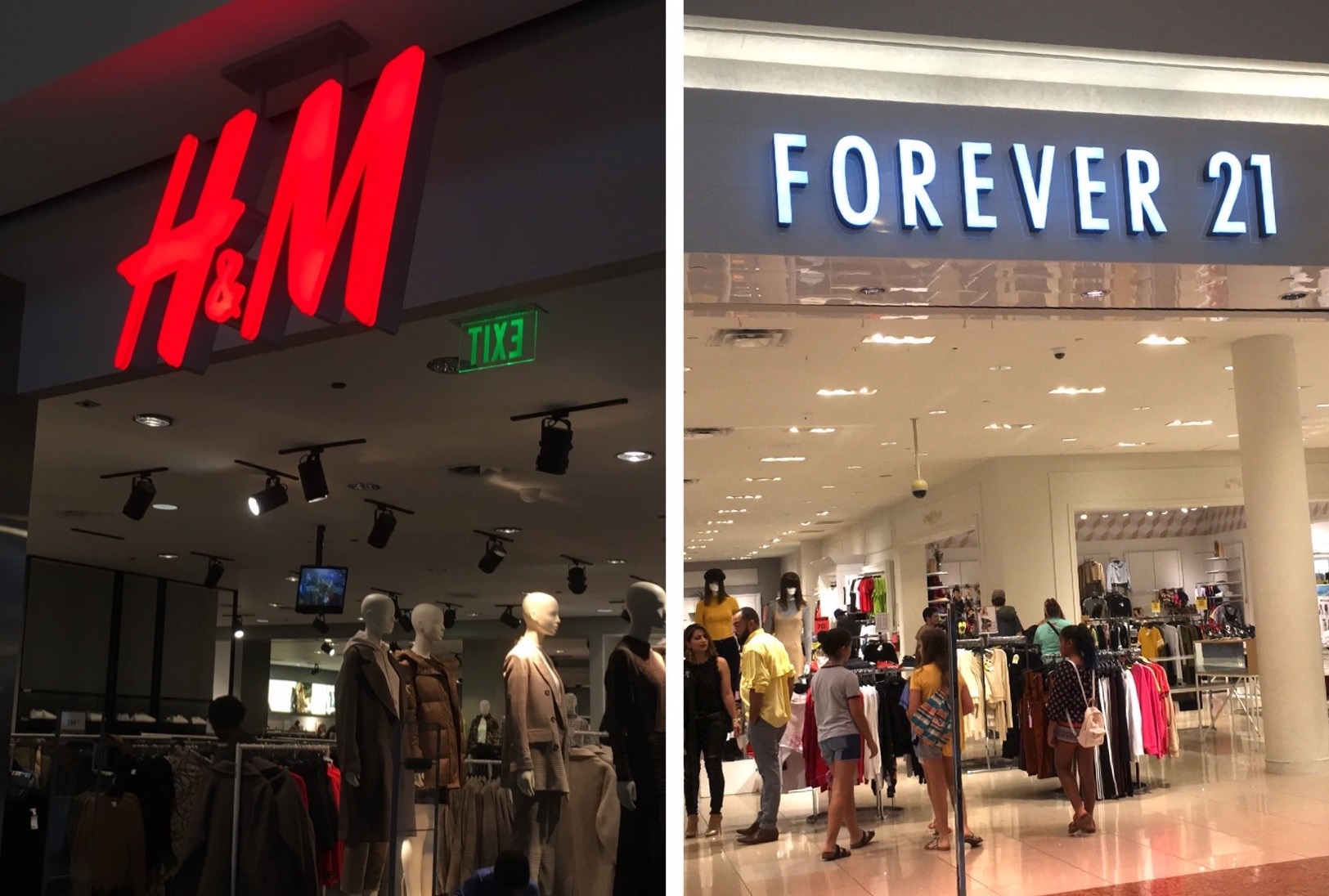In the ever changing fashion world, brands try to keep up with the latest trends. The design, create, and release process is a never ending cycle—enabling clothing brands to drop new clothes frequently. In order to keep up with the fast paced industry, companies have to get out new products as fast and as cheap as possible. Along with this comes the clearing out of the old trends that people aren’t buying anymore.
Fast fashion is the process of inexpensively manufacturing large amounts of clothing in the shortest amount of time possible.
When it comes to fast fashion, creating an item that people will want to buy is a lengthy process. The constant release of new products forms a surfeit of unwanted pieces. With no one buying the pieces and a need for room to occupy the constant flow of products, the old clothing items have to go.
The creation and buying process both do damage to the environment and all of the people involved. This raises the question– does getting the clothes you want outweigh the cons of fast fashion?
This series will highlight the ups and downs and realities of the fashion world in terms of ethicality and the environment.
Fast fashion stores are chains that come out with new products often and don’t take concern for the environmental impact. Some examples are Forever 21, H&M, and Gap.
Highlighted in an article by Forbes, one of the main negatives of fast fashion is the production process. The people who are working in factories to mass produce products for these stores are working under terrible conditions. The factories that produce clothing for fast fashion brands are mainly in Asia. They are abused, overworked, and underpaid. Not only are their working conditions terrible, but they aren’t getting the representation they should in the media. The laborious work and the toxic setting isn’t discussed as often as it should. People are purchasing clothes from these companies unaware of what the person who made it is going through. They are funding their suffering by keeping the companies alive.
Along with the poor treatment of factory workers, the production process also contributes to the decline of natural resources. In a Lifehack article they address the statistics– “…fiber production takes now takes roughly 145 million tons of coal and between 1.5 and 2 trillion gallons of water,” in factories overseas. The burning of coal pollutes the air, and the usage of water can shorten supplies at a quicker rate.
The factories use toxic chemicals to create the patterns, prints, and colors on all items; this contributes to water pollution. They waste clean and drinkable water to dye clothing.
Another massive issue with the clothing production is the polyester pollution. The release of microfibers into waterways when factories wash the fabrics in washing machines contributes to water pollution as well. The microfibers are small enough for marine life and other wildlife to consume– leading to the decline of certain species.
The problems don’t stop even after the clothing hits the shelves. The constant production of items can lead to an overstock of clothing. With no one buying the products and new trends entering the store, the companies have no choice but to dispose of the products. The waste leads to more trash buildup and overflowing of landfills with no way to get rid of it.
Fast fashion also affects the consumers. When consumers are trying to save money while still achieving the look they desire, they tend to forget the quality of the product they are purchasing. Buying low quality items for a cheap price just creates a need to rebuy a product in the future once it isn’t wearable anymore. Whether it’s discoloration, a hole, or something else, the need to purchase a new item at some point in time is inevitable.
The consumer will go out and repurchase their beloved item or a new one at a low price and the same cycle will happen all over again. Consumers that shop at fast fashion stores choose quantity, as in the amount they are spending or the amount they are getting, over quality. Rather than investing in a high quality item that can last them for a long time, they take the easy way out, and all at the same time are funding the continuation of the destruction fast fashion is causing.
Overall, fast fashion affects everyone who is involved. Whether a consumer purchases from or supports fast fashion companies or not, it affects their environment as well. Fast fashion is a problem all the way from the factory to the store, and to the consumers closet.

Hi! My name is Lyric and I am a senior editor and the website editor for The Mycenaean. I am also Vice President of Quill and Scroll Society, Makeup Crew Head, and a member of National English Honor Society.

Leave a Reply